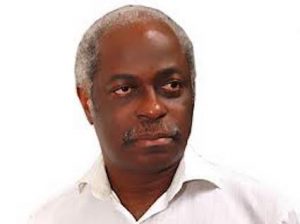‘Indian Matchmaking’ presents painful truths about skin color and love in Indian culture but does nothing to challenge them
Written by Aditi Sangal, CNNOn Netflix’s “Indian Matchmaking,” marriage consultant Sima Taparia travels the world to meet with hopeful clients and help them find the perfect match for an arranged marriage. The format of the show is simple. Hopeful brides- and grooms-to-be meet with Taparia — often with their overbearing parents in tow — for an initial consultation. Criteria are laid out, potential suiters are presented on paper, dates are arranged, and then it’s up to the couple to decide if it’s a match. In some respects, the producers should be commended. This is a show that turns away from the “big fat Indian wedding” trope and offers something fresh: a look at how some traditional-facing couples meet through the services of a professional matchmaker. The characters’ stories — as well as cringier moments — play out in entertaining ways, at times revealing the absurdities and awkwardness of matchmaking. I laughed when, for example, Taparia sought the consultation of an astrologist and a face reader.Matchmaker Sima Taparia meets with hopeful clients. Credit: NetflixAt other points, the show presents brutal truths about Indian culture: the emphasis on being “fair”; the enormous pressure to wed; the focus on caste and class; the stigmatization of independent, working women. But the show fails to contextualize or even question these problematic beliefs when they’re brought up by its characters, presenting them instead as the status quo. With that, Netflix missed an opportunity to challenge a social system fraught with cultural biases, and also educate a global audience on important nuances. In Sima Taparia, the show found a regressive anchor who merely peddles flawed practices. ColorismMentioned casually but frequently throughout the eight episodes is the idea that candidates should be “fair,” or in other words, have light skin. The subject of skin color and, subsequently, social status in Indian culture is incredibly complex. While people with darker skin tones are subjected to harsh discrimination and prejudice, fairness is revered and associated with beauty, wealth and power. Vyasar Ganesan (left) and Rashi (right) on episode six of “Indian Matchmaking.” Credit: NetflixThis cultural bias is engrained from an early age, with women bearing more of the societal pressure to have lighter skin. If you’re a woman, darker skin can be a deal-breaker for families seeking the perfect wife for their son. For men, fair skin is seen as a bonus but not as much of a requirement. Colorism and the desirability of “fairness” is drilled into young girls. In my own case, it started when I was in middle school in India, when my classmates taunted me for having darker skin. Older women would also make unsolicited comments about my complexion, veiled as genuine concern for me and my future marriage prospects. In India, the beauty standard is further perpetuated by pop culture and a booming cosmetic industry. Fair and Lovely skin fairness cream at a shop in New Delhi. Credit: Sajjad Hussain/AFP via Getty ImagesSkin lightening products are heavily marketed. Actors with glowing, pale complexions are the stars of Bollywood movies while their dark-skinned counterparts play poor, disenfranchised characters. Some dating apps even include skin tone filters. Unspoken rules “Indian Matchmaking” itself offers a window into the lifestyles of an elite class of Indians who can enlist the service of a top-tier matchmaker, and in some cases, fly them to the other side of the world. This is not something regular families do, so status is already built into the narrative. Perhaps this makes it easier for families to avoid explicitly specifying fair skin as part of their match criteria. Taparia assumes it goes without saying, and constantly describes women as a “good person” or match because they are “fair and good looking.” Some of the families rely on this — it allows them to be politically correct and vague in their search for someone “good looking” without explicitly saying “fair.” Pradhyuman Maloo in episode four of “Indian Matchmaking.” Credit: NetflixYet, they get exactly the kind of complexion they want to see. It’s the equivalent of writing “caste no bar” in a matrimonial ad — a suggestion that the person who placed the ad is willing to consider candidates regardless of social hierarchy — but in reality only going on dates with people from the “community,” which becomes a euphemistic catch-all term for people from the same religion, caste or class. Take the young Mumbai-based Pradhyuman Maloo, who features prominently in the show, as an example. His well-to-do parents desperately want him to settle down and find a wife, but he seems mostly uninterested in the women presented to him, until he’s shown a photo of Rushali Rai, a beautiful model from Delhi. His eyes light up at the sight of her. Taparia describes her as “fair and good-looking, but also, she’s smart.” When Maloo first sees her photo, he is elated. “Ahh, she’s so cute!” “I’ll tell you that from her dressing style to her look and everything, how she carries herself, that I can meet her,” he said. “It’s going to be exciting. It’s going to be fun.” Pradhyuman Maloo on a date with actor and model Rushali Rai on “Indian Matchmaking.” Credit: NetflixWatching the two side-by-side on their date, it’s impossible to ignore the fact that, of all the characters in the show, they have the most similar skin tones. Their pairing does nothing to challenge the deep-rooted cultural notion that you should marry someone with a similar background. Changing attitudesAs for women who don’t fit the “fair, tall and slim” criteria, we do see the show acknowledging a different fate. Businesswoman Ankita Bansal is sent to a life coach, with whom she discusses the insecurities she had with her body growing up. “People would come and tell me that you’re never going to find anybody because you have to lose some weight,” said Bansal, adding that she suffered from “off the charts” anxiety. “So that played a very big part in how I lost my confidence completely in even trying to approach a man.” The life coach acknowledges that such expectations can be unrealistic, and hurtful when it comes to a woman feeling her true worth. “I think it’s so — superficial, maybe, that they’re only defining us by the way we look.” Nadia Jagessar on episode two of “Indian Matchmaking.” Credit: NetflixBut attitudes towards “fairness” and beauty ideals are changing. Young people — who are usually more social-media savvy and better educated — feel more empowered to go against the grain, and to put pressure on those who continue to perpetuate beauty standards. There are several ongoing campaigns that call out celebrities who endorse skin-lightening products, and some Bollywood stars have refused to be associated with these creams.The campaign “Dark is Beautiful” has waged its decade-long fight against colorism by creating awareness programs about skin bias. Others like “Dark is Divine” and “Unfair and Lovely” have also since joined the fight. The show sidesteps signs of such progress, instead providing a platform for outdated clichés over cultural debate and context. Fittingly, in one of the final scenes, Richa, a young Indian American woman, who Tapaira gives “95 out of 100,” reels off her criteria for the perfect match. It’s not the first point in a long list, but when she comes to it, it lands jarringly. “Not too dark, you know, fair-skinned.”







